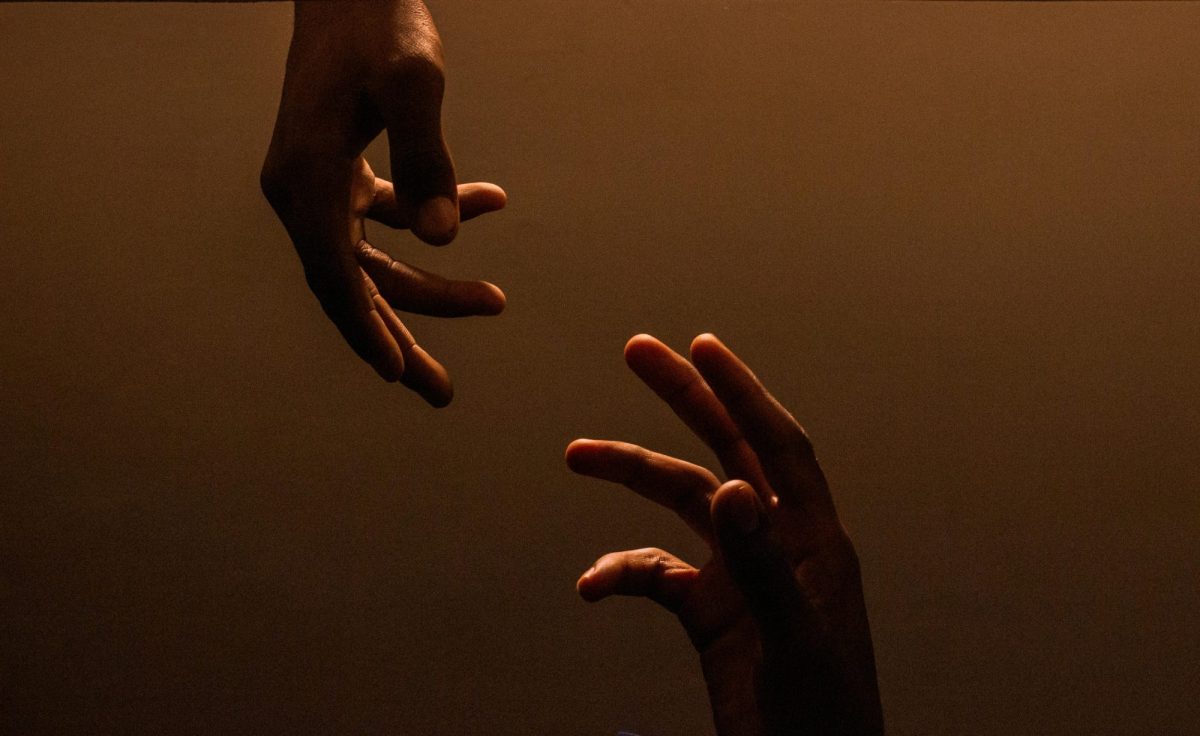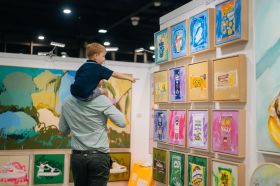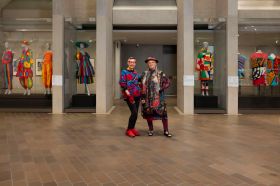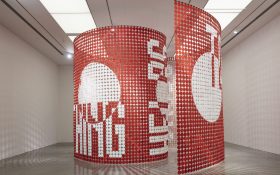With each of their announcements there seemed to be a race to be the first Indigenous arts and culture centre locally, and yet, as the years roll by on each of these projects, it would seem it is more the case of which will be last.
As visionary parallel projects across four states and territories, they share one thing in common: their time frames have been thrown into disarray – have even stagnated in some cases – as politics, funding shortfalls, fractures between different Aboriginal groups, criticisms over selected sites and/or false starts with design competitions have plagued their progression. ArtsHub takes a look at the current state of affairs.
In this article:
1. Tarrkarri: Centre for First Nations Cultures, Adelaide
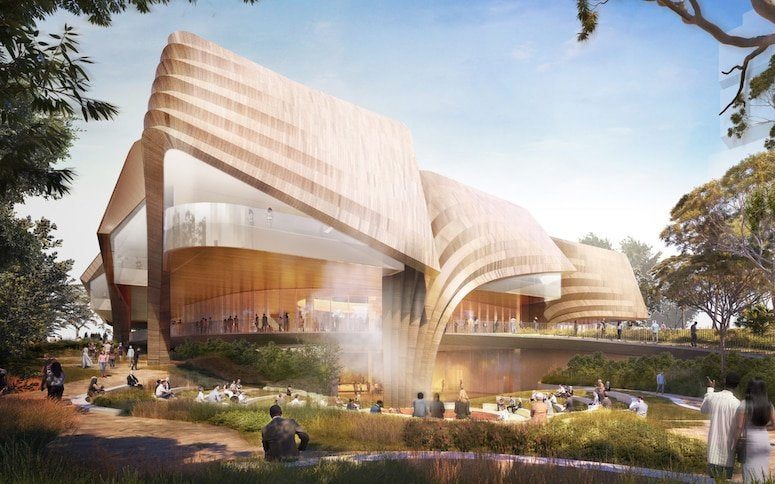
The proposed design for Tarrkarri. Design. Credit: Diller Scofidio + Renfro and Woods Bagot. Image: Courtesy Lot Fourteen.
November 2016: It’s impossible to understand the complications over this site without remembering it was first allocated for a new gallery, Adelaide Contemporary, under the Labor Government. It was to occupy Lot Fourteen along North Terrace, the old hospital site next to the Botanic Garden.
March 2018: Opposition Leader, Steven Marshall’s election promise was to shift the focus of the gallery to a national Aboriginal art centre. Marshall told InDaily the estimated total cost of the gallery would be between $200 million and $250 million, “similar to the Weatherill Government’s indicative cost of $250 million for its contemporary art gallery”.
March 2018: Former Prime Minister, Scott Morrison pledged $85 million towards the Centre as part of a 10-year ‘city deal’ for Adelaide to boost the local economy.
June 2018: New York architectural firm Diller Scofidio + Renfro (DS+R), in partnership with Adelaide practice Woods Bagot, was announced as the winning team for Adelaide Contemporary, after an international design competition.
February 2019: Newly elected Premier Marshall confirmed the change, and said a scoping study, for which $200,000 was allocated in the 2018/19 state budget, would be undertaken by PricewaterhouseCoopers. A total of $60 million has so far been allocated for the commencement of construction for the National Gallery for Aboriginal Art and Cultures.
August 2019: The Government dropped the word ‘national’ from the gallery’s name.
September 2020: The State Government started advertising for an Aboriginal or Torres Strait Islander ‘project and program director’ to lead the construction and planning of the gallery ahead of its anticipated 2023 opening. The brief: “The director role – which is advertised as a ‘long-term contract’ of up to three years – is only open to Aboriginal or Torres Strait Islander candidates and pays between $154,678 and $216,626 per year.”
February 2021: The then Federal Arts Minister, Paul Fletcher, and Premier Steven Marshall, launched the concept design for the Adelaide Aboriginal Art and Cultures Centre (AACC), keeping on architectural studio Woods Bagot (but dropping the international architectural duo). Construction was to start in late 2021, with a vision to open in early 2025. The museum had originally been slated to open late 2022, then in 2023.
October 2021: South Australia’s State Commission Assessment Panel granted planning approval to the Aboriginal Art and Cultures Centre in Adelaide.
November 2022: A report summarising findings from the Government’s consultation with Aboriginal communities and other cultural institutions recommended that the Cultural Centre by called a ‘centre’ as “for many people, the word ‘museum’ or ‘gallery’ mean different things”.
December 2021: With several news sources reporting that “construction begins today”, a vacant site today is testament that did not happen. Coinciding with this announcement was yet another name change (the fifth since the site was envisaged for a gallery). It would now be named Tarrkarri, meaning ‘the future’ in Kaurna language.
March 2022: With Labor returned to government, the development of Tarrkarri was put on hold while the project was reviewed by a committee appointed by the Government.
August 2022: The report was handed to the Government, but was not publicly released.
October 2022: New Premier Peter Malinauskas cast doubt on his Government’s commitment to funding the project, putting construction on hold, as fears of a $50 million blowout of the previous Liberal Government-approved $200 million project.
April 2023: The review panel, which was headed by former federal Indigenous Australians minister Ken Wyatt, former New South Wales premier Bob Carr and Reserve Bank Board member Carolyn Hewson, handed its report to the State Cabinet. It suggested the project could cost up to three times more than the budgeted $200 million.
May 2023: Arts adviser Michael Lynch publicly criticised the “ill-formed proposal” endorsed by South Australia’s Liberal Government, and the decision to “flick aside” Diller Scofidio + Renfro and Woods Bagot.
“I’m really distressed and disappointed that what was a fabulous proposal, a fabulous architectural competition and a fabulous celebration of both contemporary and Aboriginal art is still struggling, despite the fact that we’re two and a half years down the track since the Premier came up with the idea,” Michael Lynch told InDaily. He continued: “The State Government has spent $147,529 commissioning a report to “define the vision and scope” of the Aboriginal Cultures Centre, $235 on probity advice and $77,025 on a ‘full’ business case.”
June 2023: The site remained a hole in the ground with a potential cost blowout of $400 million. Significantly, there was no additional money promised for the project in the 2023-24 state budget, although there was a forecast completion date of 2027.
April 2025: The State Government announced its 10-year cultural policy, offering a roadmap for the period 2025-2027. Funding for Tarrkarri, however, was omitted. Premier Malinauskas did say, “The Tarrkarri dream for us is still alive,” hinting that further announcements were on the horizon.
Today: That further announcement has not arrived. Nearly seven years on, the site remains boarded up with no activity.
Read: Outcry over SA Museum restructure reveals systemic government funding cuts
2. National Aboriginal Art Gallery (NAAG), Mparntwe/Alice Springs

2016: The Northern Territory government proposed a National Aboriginal Art Gallery for Alice Springs. Under Michael Gunner, the Chief Minister, the territory committed $50 million to the project, with the hope of attracting further funding from the Federal Government and private sources.
2017: A National Reference Group was established, comprising 11 members, nine of whom identify as First Nations and three being Traditional Owners of the three local Native Title estate groups of Mparntwe/Alice Springs.
February 2017: Michael Lynch was one of five museum experts appointed in February 2017 to advise the Northern Territory Government on a gallery in Alice Springs to celebrate Indigenous art from a national perspective. The steering committee was led by Hetti Perkins, a respected Indigenous art curator, and Philip Watkins, the chief executive of Desart, which represents Central Australian arts and craft centres.
September 2019: Funding was committed by the Northern Territory Government and the Australian Government. The Northern Territory Government set aside $69 million, while the Australian Government committed $80 million.
November 2017: Controversy over the choice of site led to community members disputing the land parcel as holding sacred sites. It resulted in an experts’ report, which recommended the museum be built at a scenic site called Desert Park, seven kilometres from Alice Springs, and not at Anzac Oval. The site for the $150 million project, known at the time as the National Aboriginal Art Gallery (NAAG), faced sustained community pushback. The previous Labor NT Government chose not to take on board their concerns.
April 2021: Tracy Puklowski was appointed Senior Director to lead the delivery of the new institution, taking up the role in May. The Government released a statement saying: “Ms Puklowski will be responsible for leading a project team of five officers with various skills across curatorial, engagement and project management. She will also provide input into the design of the art gallery, develop content and programming, and engage with stakeholders in Alice Springs, and nationally, to ensure the ongoing success of the gallery.” While Puklowski has a museum background, she is not of First Nations ancestry.
September 2021: The Alice Springs Town Council (ASTC) took its fight to relocate the proposed gallery to the NT Civil and Administrative Tribunal. The oval, which was owned by ASTC, was later (2023) forcibly acquired by the NT government for $3.66 million. The tribunal recommended the Government give further consideration to the concerns of Traditional Owners before moving ahead. However, the Council eventually stood down.
November 2022: The Territory Government announced the appointment of Arrernte woman Sera Bray to co-lead the development of NAAG, working alongside Puklowski and the National Reference Group.
March 2023: The acquisition of Anzac Oval was finalised, with the ASTC compensated for the site to house NAAG. The new Gallery would be part of a broader plan for the Anzac Hill precinct, which includes a new Visitor Information Centre and purpose-built home for Tourism Australia on the old Shell Depot site, as well as pathways, lighting and landscaping connecting the precinct to the CBD.
July 2023: The design concept was announced, developed by BVN Architecture and local architectural practice Susan Dugdale & Associates. It would feature a cultural welcoming circle, event space, healing gardens, café, atrium and Kwatye (water) play area. The tender process was said to commence late 2023, with construction expected to commence in 2024. It was announced that the National Aboriginal Art Gallery project team would conduct project and design information sessions throughout August and September 2023.
September 2023: The demolition of Anzac Oval was halted, as the new NT Government reconsidered the ‘next steps’ for the controversy-plagued Aboriginal and Torres Strait Islander Art Gallery. The ABC reported: “Since its conception, the project has been marred by failed negotiations with Traditional Owners, who argued sacred sites could be threatened by the planned development at the Anzac Oval site.”
November 2023: The Northern Territory Government unveiled new designs for the National Aboriginal Art Gallery in Mparntwe/Alice Springs, with updates made to BVN’s interior atrium and façade design. The tender process opened in December 2023.
June 2024: Sitzler was contracted to build the new gallery, confirming at the time of the announcement that it would now be known as the Aboriginal and Torres Strait Island Art Gallery of Australia (ATSIAGA) – not National Aboriginal Art Gallery (NAAG).
December 2024: The gallery and precinct began 12 months of design and approvals (taking it through to December 2025). It was expected that the gallery would take 18 to 24 months for construction and be completed in late 2027, opening in 2028.
Today: Alice Springs has been under the spotlight in recent years for urban unrest, which in turn has impacted tourism. The hope is that the new gallery and precinct will drive tourism.
3. Ngurra Cultural Precinct, Canberra

January 2022: An ambitious $316.5 million Indigenous cultural precinct in Canberra, to be known as Ngurra (meaning home), was announced. It was to comprise two key elements: the National Indigenous Knowledge and Cultural Centre, and a National Resting Place. The site identified was lakeside in Commonwealth Place, between the Australian War Memorial and the Museum of Australian Democracy. The site would also be a new home for the Australian Institute of Aboriginal and Torres Strait Islander Studies (AIATSIS). It was announced by the Morrison Government.
March 2022: EOIs opened for the architectural design competition. For Stage 1 of the competition (endorsed by the Australian Institute of Architects), EOIs were welcomed from eligible Australian design professionals with four being selected to participate in Stage 2. Shortlisted design teams were to be remunerated approximately $100,000 for their participation in Stage 2 of the design competition.
June 2022: A total of 25 responses were received. The winning consortium was selected over three shortlisted teams, including BVN Architecture with Greenaway Architects and Nguluway DesignInc as Blak Hand Collective, Denton Corker Marshall with Yhonnie Scarce and Kat Rodwell, and Peter Stutchbury Architecture with Allen Jack and Cottier Architects.
July 2022: Local studio Djinjama unveiled its winning designs for Ngurra. Designed in collaboration with design firm COLA Studio, and architecture practices Hassell and Edition Office, their proposal won the competition.
May 2023: A spokesperson for AIATSIS told The Sydney Morning Herald that stage one and two of the design competition had been completed and a recommendation for the design concept was “with government for consideration”. The facility still had an intended opening date of 2028. “AIATSIS provided advice to the Minister’s office in late May 2023. Meetings and conversations are ongoing with a view to finalising the design competition,” the spokesperson said.
6 June 2024: Minister for Indigenous Australians Linda Burney MP sent out a release, stating: “As part of the revamped plan for Ngurra, the Australian Institute of Aboriginal and Torres Strait Islander Studies’ (AIATSIS) current premises will be upgraded and expanded to include a National Indigenous Knowledge and Cultural Centre. The previous Coalition Government’s proposal in 2022 was estimated to cost around 50% more than was originally allocated. It was not practical to proceed with the original project. A new design process to begin shortly.” The site was also moved to the Acton Peninsula.
The earlier precinct proposal featured a relocation of AIATSIS to a new building alongside the centre, but the new plans rather located Ngurra alongside the current AIATSIS building (named Maraga) and proposed renovating and expanding instead. Neither the successful concept of the design competition, or any of the shortlisted designs, were be carried over to the new site, necessitating a new design process.
7 August 2024: It was announced the new design contract for Ngurra had been awarded to architectural and design firm Denton Corker Marshall (DCM). AIATSIS awarded the contract after the original site for the precinct was moved in June earlier in the year. The Djinjama design agency website described the project as “unbuilt”.
Today: The next phase of the project is yet to be disclosed. The new centre is slated to open in 2028.
4. Aboriginal Cultural Centre (ACC), Perth

September 2020: The Perth City Deal was announced by the Australian and Western Australian Governments, with each government committing $2 million to the Perth Aboriginal Cultural Centre Pre-Feasibility Report. They also each committed a further $50 million to develop the Centre.
August 2022: News broke that a new site had been selected for a world-class Aboriginal Cultural Centre (ACC), on the banks of the Derbarl Yerrigan/Swan River. It would occupy a car park that sits between the river and the Perth Concert Hall, which is Crown Land managed by the City of Perth. At the time, the State and Federal Governments committed a combined $104 million towards the project, but speculation had already started that it would cost closer to $400 million.
August 2022: Criticism of the site noted that it would be a 20-minute walk from the Perth Cultural Centre. “[It] would sit isolated behind the Supreme Court Gardens. Even Elizabeth Quay is a 10-minute walk away and this could impinge on future visitation,” said Liberal MP, Neil Thomson.
November 2022: It was announced by government that the ACC would be a key beneficiary of a new $750 million investment by mining companies in Western Australia over 10 years. The initiative included BHP and Rio Tinto (each pledging $250 million), Hancock Prospecting (reportedly $100 million), and Atlas Iron, Woodside, Chevron and Mineral Resources also contributing.
July 2023: Consultation continued with the appointment of eight experienced Aboriginal community members to the project’s Steering Committee. It was reported that from 2022 to mid-2024 that the Aboriginal engagement team met with 99 Aboriginal organisations, peak bodies or community groups across 172 engagements, speaking with more than 1613 people from every region.
October 2024: The ACC project Steering Committee was provided with a briefing paper on the procurement of a consultant team to develop concept and schematic plans including risks associated with the timing of the site’s procurement process, adding, “There are no plans to release the tender prior to the State Government caretaker period, which begins in early January 2025.”
December 2024: The vision to open the Centre in 2028 was revised to 2030.
Today: No further updates have been announced, and no outline of how the proposed site will transition from the City of Perth to the ACC for development. There has been no call for an architectural competition for the design of the Centre. While community consultation continues, three years on this site is no closer to breaking ground.
